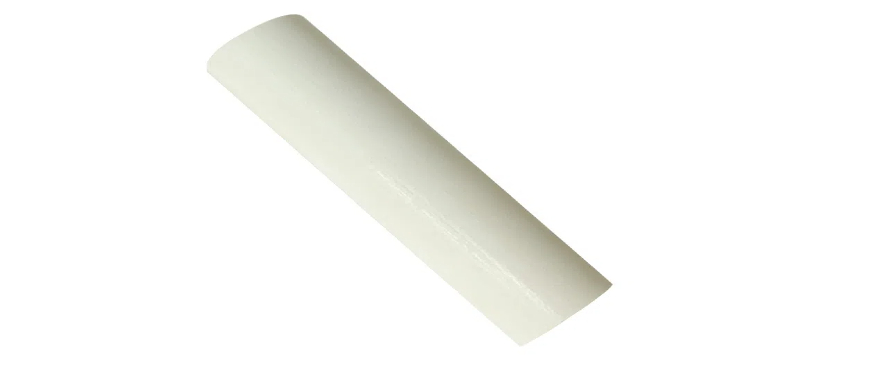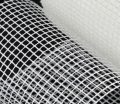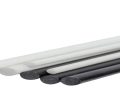
Fiberglass rods for plant support are gaining popularity among gardeners due to their impressive strength, durability, and versatility. Unlike traditional wooden stakes, fiberglass rods for plant support are weather-resistant and can withstand various environmental conditions, including rain, wind, and intense sunlight. They provide solid structural support for plants of all sizes, helping to prevent bending, breakage, or overcrowding. These rods are particularly effective for supporting tall or heavy plants like tomatoes, flowers, and climbing vines, guiding them to grow in a controlled, healthy manner. Their lightweight yet sturdy design makes them easy to handle and install, while their resistance to rust, rot, and corrosion ensures they last for many seasons. With fiberglass rods for plant support, you can ensure your plants thrive and stay upright throughout the growing season.
Fiberglass Rods for Plant Support: A Durable and Effective Solution
Fiberglass rods for plant support have gained widespread popularity due to their strength, durability, and ease of use. They provide a reliable foundation for plants to grow upright, especially when dealing with heavy flowers, climbing vines, or tall vegetables. Fiberglass rods offer several advantages over other support materials like wooden stakes or metal rods. They are lightweight, easy to handle, and resistant to the elements, making them ideal for all types of gardens. Whether you’re supporting delicate flowers or heavy fruit-bearing plants, fiberglass rods ensure that your plants grow healthily and remain upright through all seasons.
These rods are made from a composite material that offers a perfect balance between flexibility and strength. They’re designed to withstand environmental stress, from harsh sunlight to wet conditions, without losing their structural integrity. Unlike metal rods, which may rust, or wooden stakes that can rot, fiberglass rods maintain their performance year after year.
Key Benefits of Fiberglass Rods for Plant Support
Fiberglass rods for plant support bring a range of benefits that make them an excellent choice for gardeners. Here are the main advantages:
Durability and Longevity
Fiberglass rods for plant support are designed to last. Unlike wood, which can break down over time or metal that rusts, fiberglass is impervious to moisture, extreme temperatures, and harsh weather. This longevity means you won’t need to replace the rods frequently, making them a cost-effective solution for long-term garden use.
Lightweight and Easy to Handle
Fiberglass rods are incredibly light, making them easy to move and position in the garden. Their lightweight nature doesn’t compromise their strength. These rods can support heavy plants like tomatoes or large climbing vines while being manageable enough for quick adjustments or installations.
Resistance to Environmental Damage
Fiberglass is resistant to weather extremes. Whether exposed to the heat of summer or the cold of winter, fiberglass rods for plant support will not crack, warp, or degrade. Their non-corrosive nature ensures that they will continue to perform without weakening, unlike metal alternatives that are susceptible to rust and degradation.
Non-Toxic and Safe for Plants
For organic gardeners or those concerned with the safety of their plants, fiberglass rods offer a significant advantage. They do not leach harmful chemicals into the soil, making them a safe choice for all types of plants. Unlike certain materials that might negatively affect soil health, fiberglass is chemically inert, ensuring that your garden remains chemical-free and healthy.
Versatility in Plant Support
Fiberglass rods can be used for a wide variety of plants, from small flowers to larger shrubs and climbing plants. The flexibility of fiberglass allows you to cut the rods to different lengths based on your needs, making them adaptable for virtually any type of plant. This versatility makes them a go-to solution for gardeners with diverse plant varieties.
Using Fiberglass Rods for Plant Support
Using fiberglass rods for plant support is simple and straightforward. To get started, here’s a step-by-step guide on how to install them properly:
Setting Up the Fiberglass Rods
First, measure the height of your plant to determine the required length of the fiberglass rod. If the plant is tall, you may need a rod that extends well above the plant’s height. Cut the rod to the appropriate length if necessary. Once you have the correct size, insert the rod into the soil near the plant’s base. Ideally, the rod should be placed about 2-3 inches deep into the soil for stability, but this may vary depending on your plant and soil conditions.
After placing the rod into the soil, secure the plant to the rod using garden ties, twine, or Velcro strips. It’s crucial not to tie the plant too tightly to the rod, as this can impede its growth. Use soft ties that won’t damage the plant, allowing it to grow freely while still providing the necessary support. Regular checks should be made to ensure that the ties do not constrict the plant as it continues to grow.
Tips for Maintaining Stability and Support
For larger plants or plants that need extra support, you can use multiple fiberglass rods. Position them around the plant to form a stable framework that helps support the weight and growth of the plant. This is especially useful for heavy fruit-bearing plants or tall, vine-like plants. The rods can be arranged in a grid pattern for climbing plants or in a circular formation for smaller shrubs.
Be sure to check the rods and ties regularly as the plant grows. If the plant starts to lean or shows signs of imbalance, you may need to reposition the rods to maintain proper support. Checking the stability of the rods every few weeks ensures that they remain securely in place throughout the growing season.
Fiberglass rods can also be helpful for plants that tend to spread out. By installing additional rods and tying the plant at different points, you can prevent it from sprawling and help maintain a more compact shape. This keeps the plant growing in a controlled manner while providing support to ensure it remains upright.
Why Fiberglass Rods for Plant Support Are a Smart Choice
Fiberglass rods offer a range of benefits that make them an excellent choice for gardeners. They provide strong, long-lasting support while being lightweight and easy to handle. The non-toxic and weather-resistant properties of fiberglass ensure that they will not harm plants or degrade over time. With their versatility, fiberglass rods can be used in many different garden scenarios, from small container plants to large vegetable crops.
One of the standout features of fiberglass rods is their durability. Unlike metal or wooden alternatives, fiberglass does not corrode or rot, which means it will continue to provide effective support year after year. This long lifespan makes fiberglass rods a sustainable choice for gardeners who want to minimize waste and reduce the need for frequent replacements.
Furthermore, the adaptability of fiberglass rods makes them suitable for all types of gardens. Whether you are growing small flowers, large fruit trees, or climbing vegetables, fiberglass rods can be customized to suit your specific plant support needs. This versatility is one of the main reasons gardeners prefer fiberglass rods for plant support.
Maintaining and Caring for Fiberglass Rods
Fiberglass rods are low-maintenance, but regular inspection is recommended to ensure they continue to provide effective support. Over time, the rods should be checked for any visible damage, cracks, or brittleness. Although fiberglass is highly durable, wear and tear can occur if the rods are exposed to extreme pressure or rough handling. Replacing damaged rods promptly ensures that your plants remain supported and healthy.
Another aspect to consider is the aesthetic impact of the fiberglass rods in your garden. While functional, the rods may not always blend well with your garden’s natural appearance. To address this, you can use plants to cover the rods or choose decorative covers that help the rods blend into your garden’s design. This allows you to maintain the functionality of the rods while enhancing the visual appeal of your garden.
Fiberglass rods for plant support are also environmentally friendly. Although fiberglass is not biodegradable, its long lifespan means fewer replacements are needed compared to other materials. By reducing the frequency of replacements, fiberglass rods help minimize waste and contribute to sustainability.
Will Barbed Hook Work on Fiberglass Rod Effectively?
Fiberglass Rods for Plant Support: A Reliable and Durable Solution
Fiberglass rods for plant support have become an essential tool for many gardeners due to their strength, durability, and ease of use. These rods are highly versatile, offering a stable support structure for plants of all types. Whether you’re growing tall plants like tomatoes or delicate climbing vines, fiberglass rods for plant support provide the necessary reinforcement to keep your plants upright and healthy.
The Key Benefits of Fiberglass Rods for Plant Support
Fiberglass rods for plant support provide several key advantages, making them a preferred choice for both amateur and professional gardeners.
Strength and Durability
Fiberglass rods for plant support offer exceptional strength, providing a reliable option for supporting heavy plants. Unlike wooden stakes, fiberglass rods won’t bend or break under pressure. They remain upright even under the weight of large plants or in windy conditions. Their high tensile strength ensures that they can support tall plants with heavy blooms or fruit, making them ideal for gardens with a wide variety of plants.
Weather Resistance
Fiberglass rods for plant support are highly resistant to the elements. They do not rust, rot, or corrode like metal or wooden stakes. This makes them an excellent choice for all weather conditions, whether exposed to rain, snow, or strong sunlight. The durability of fiberglass rods ensures that they maintain their structural integrity, offering long-lasting support throughout the growing season and beyond.
Lightweight and Easy to Handle
Fiberglass rods for plant support are much lighter than metal rods, making them easier to handle, transport, and install. This feature is particularly useful for gardeners who need to adjust their plant supports as their plants grow or when planting multiple plants. The lightweight nature of fiberglass rods also makes them easy to move around the garden, simplifying tasks like rearranging supports or setting up new plant beds.
Reusable and Eco-Friendly
Fiberglass rods for plant support can be reused season after season. Unlike other materials that may degrade or wear out, fiberglass rods are durable and easy to clean, making them a sustainable option for gardeners. Simply wash them after each growing season, store them in a dry place, and they will be ready for use again. This makes them not only cost-effective but also environmentally friendly, reducing waste and the need for constant replacements.
Non-Toxic and Safe for Plants
Fiberglass rods for plant support are non-toxic and safe for use around plants. They do not leach harmful chemicals into the soil, making them an ideal choice for organic gardening. This ensures that your plants can grow without the risk of contamination, which can sometimes be a concern with other materials, such as treated wood or metal supports.
Heavy-Duty Windsock with Fiberglass Rod for High Winds
How to Use Fiberglass Rods for Plant Support
Using fiberglass rods for plant support is straightforward. By following a few simple steps, you can ensure that your plants remain healthy and well-supported throughout their growth.
Measure and Cut the Rods
First, measure the height of the plant you wish to support. Cut the fiberglass rod to the desired length using a saw or cutting tool. It’s important to cut the rod slightly taller than the plant to allow for growth. If you are supporting multiple plants, you may need to use multiple rods for a more robust support structure.
Insert the Rod into the Soil
Place the fiberglass rod into the soil near the base of the plant, ensuring that it is positioned close enough to provide adequate support. Push the rod into the ground 2-3 inches deep to anchor it securely. The depth of the rod may vary depending on the size of the plant, but it should be deep enough to withstand wind or other environmental pressures.
Secure the Plant to the Rod
Once the fiberglass rod is in place, use garden twine, ties, or other plant-support materials to secure the plant to the rod. Be sure to tie the plant loosely to avoid constricting the stem. As the plant grows, you may need to adjust the ties or move the rod to accommodate new growth.
Adjust the Rod as Needed
As your plant continues to grow, you may need to reposition the fiberglass rod or add additional rods for extra support. This is particularly important for taller plants that may become top-heavy or plants that require extra stability due to their size or the weight of their flowers and fruit.
Maintenance and Care of Fiberglass Rods for Plant Support
Fiberglass rods for plant support require minimal maintenance, which is one of their biggest advantages.
Cleaning the Rods
At the end of each growing season, clean the fiberglass rods to remove dirt, soil, and plant residue. This can be done using a mild soap solution and a scrub brush. Avoid using harsh chemicals that could damage the fiberglass. Once cleaned, rinse the rods thoroughly and allow them to dry completely before storing them.
Proper Storage
Store fiberglass rods in a dry, cool place to prevent exposure to moisture. Keeping them in a sheltered area ensures that they remain in good condition and ready for use in the next growing season. If storing for long periods, it may be helpful to wrap the rods in a protective cover to keep them free from dust or debris.
Check for Damage
Before reusing the fiberglass rods, inspect them for any signs of damage, such as cracks or bends. If the rods are damaged, they may not provide the necessary support for your plants. Fiberglass rods are highly durable, but occasional checks ensure that they will continue to perform effectively throughout the growing season.
Alternatives to Fiberglass Rods for Plant Support
While fiberglass rods for plant support offer many benefits, some gardeners may prefer alternative materials depending on their specific needs.
Wooden Stakes
Wooden stakes are a common alternative to fiberglass rods, but they come with several drawbacks. They can rot, warp, or splinter over time, especially when exposed to moisture. Wooden stakes are also less durable than fiberglass rods, meaning they may need to be replaced more often.
Metal Rods
Metal rods are another option for plant support. However, they are heavier than fiberglass rods and can rust over time, particularly in humid or rainy conditions. Metal rods may also be more difficult to install due to their weight, making fiberglass a more user-friendly option for many gardeners.
Plastic Stakes
Plastic stakes are lightweight and resistant to corrosion, but they may not be as strong or durable as fiberglass. Over time, plastic can become brittle, especially when exposed to direct sunlight for extended periods. Fiberglass rods offer superior strength and longevity compared to plastic stakes, making them a better long-term investment for plant support.
Best Fiberglass Gripper Rods for Your Construction Needs
FAQs about Fiberglass Rods for Plant Support
Fiberglass rods are incredibly versatile and are used in a variety of applications across different industries. Their most common use is in construction, where they serve as reinforcement for concrete, providing added strength and durability. These rods are also lightweight yet strong, which makes them ideal for use in outdoor and marine environments, where they are resistant to corrosion.
In gardening, fiberglass rods are widely used to create plant support stakes. They are particularly effective for supporting tall or climbing plants such as tomatoes, beans, and flowering vines. The rods provide structural support to keep plants upright and prevent them from breaking under the weight of fruit or flowers.
Making your own plant support stakes is a simple and cost-effective way to help your garden thrive, especially if you have tall or heavy plants that need extra support. Here’s how you can create plant support stakes using fiberglass rods:
Materials Needed:
Fiberglass rods (available at hardware or garden stores)
A cutting tool (such as a saw or wire cutter)
Optional: Rubber caps or end protectors (to cover sharp edges)
Optional: Twine, garden wire, or ties to secure plants
Steps to Make Plant Support Stakes:
Step 1: Choose the Right Length – Decide on the height you need for your plant support stakes based on the size of the plants you’re growing. Generally, stakes should be 1 to 2 feet taller than the plants to provide sufficient support.
Step 2: Cut the Fiberglass Rods – Using a saw or wire cutter, cut the fiberglass rods to the desired length. If you are making multiple stakes, measure and mark the rods before cutting to ensure consistency.
Step 3: Insert Stakes Into the Ground – Push the fiberglass rods firmly into the soil near the base of each plant. If the soil is hard, you may need to pre-dig a hole to make inserting the rods easier.
Step 4: Secure the Plant to the Stake – Use garden twine, ties, or wire to attach the plant to the fiberglass stake, ensuring it is supported without being constricted. As the plant grows, you can adjust the ties as needed.

As the editor of GangLong Fiberglass, I have years of experience and in-depth research, focusing on cable tray products, fiberglass solutions, and grille systems. I incorporate years of industry insights and practical experience into every content, committed to promoting the progress of the industry. At GangLong Fiberglass, my commitment is reflected in every product, from innovative cable trays to durable fiberglass solutions and sturdy grille systems. As an authoritative voice in the industry, my goal is to provide valuable information to professionals and businesses and promote forward-looking solutions.


